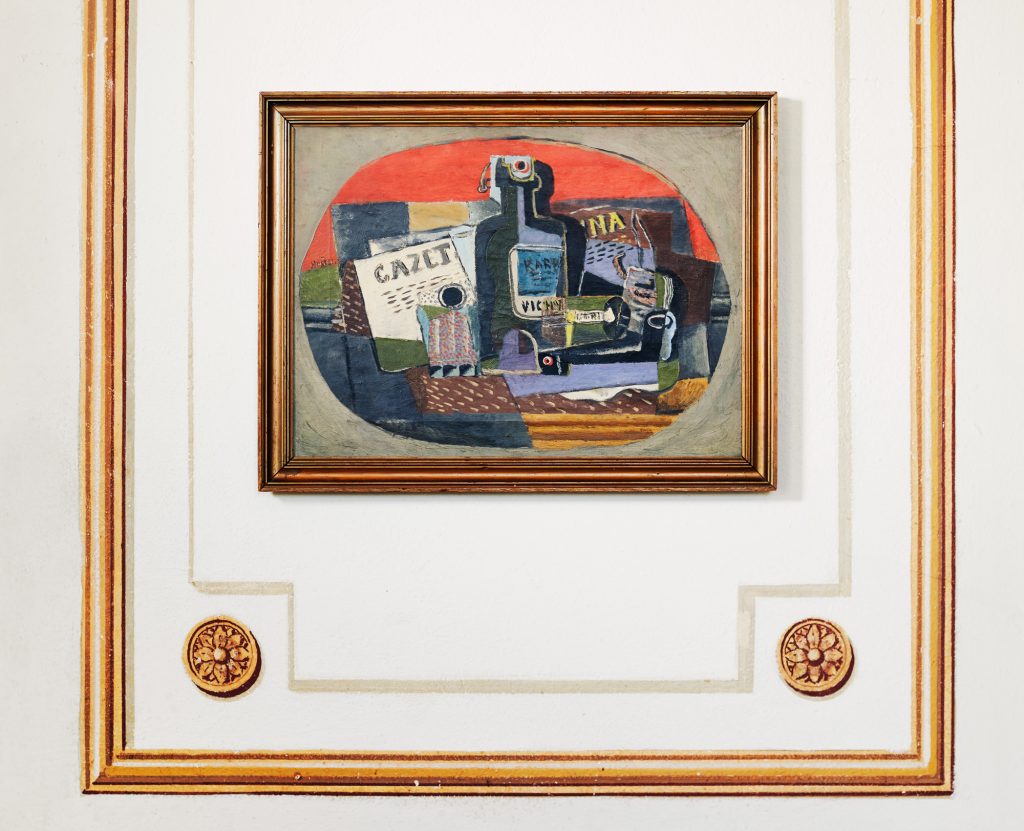Aktuella auktioner
Se datum och information

Sold for SEK 660.000 at Uppsala Auktionskammares Important Sale 11-14 December 2018
Lot 613. Henri Hayden (Poland/France 1883‑1970). ”Bouteille et journal”. Signed Hayden and signed on the reverse. Oil on canvas, 37 x 50 cm.
Executed in November 1919.
Provenance
Léonce Rosenberg (1879‑1947), Galerie de l’Effort Moderne, Paris.
Hôtel Drouot, Paris, sale 24 October 1927.
The collection of Theodor (1892‑1968) and Gertrud Woelfer (1893‑1984), Malmö.
A Swedish Private Collection.
Literature
Konst i svenska hem – målningar och skulpturer från 1800 till våra dagar, part I, 1942, mentioned under the collection of Theodor and Gertrud Woelfer, Malmö, no. 371, p. 245.
The Polish-Jewish painter Henri Hayden was born in Warsaw but eventually moved to Paris in 1907 to devote himself fully to painting. The same year Pablo Picasso and Georges Braque invented cubism, a movement inspired by the late works of Paul Cézanne shown at Salon d’Automne in 1904 and one of the most influential styles of the 20th century. The cubist painters further developed the idea of broken up objects and created compositions where the subject is depicted from a multitude of viewpoints and reassembled in an abstracted, analysed form. Hayden greatly admired Cézanne and visited his ground breaking retrospective during his first year in Paris. ”I only absorbed Cubism in 1915, after having swallowed and digested all of French painting in a few years. This rapid absorption led me, in a spirit of creative synthesis, without even realising, to Picasso and Braque’s experimentation at the time.”
The Polish art critic Adolphe Basler introduced Hayden to André Salmon, one of the early defenders of cubism and a highly acclaimed art critic and writer. Hayden decided to join the Cubist movement in 1915 and quickly became friend with some of the most famous artists in Paris at that time, such as Pablo Picasso, Juan Gris and Georges Braque. The World War I had broken out only a year before; still Paris was thriving of life, creativity and optimism. The young Hayden managed to find a new studio not far from Picasso, Gino Severini and Jean Metzinger on the boulevard Raspail where he could devote himself to painting as well as indulging in the captivating life of Paris. His intimate circle of friends and contemporary artists soon included also Henri Matisse, Max Jacob, Jean Cocteau and Jacques Lipchitz. The latter recommended Hayden to the prominent art dealer Léonce Rosenberg, whose Galerie de l’Effort Moderne was one of the most prestigious and forthcoming galleries in Paris. Rosenberg was an early advocate of Cubism and his gallery was open to all forms of Cubism and Abstract art. Through the Salon des Indépendants, the art dealer Wilhelm Uhde and at the gallery of Picasso’s dealer Daniel-Henry Kahnweiler he discovered the works of avant-garde artists.
The painting included in this sale was executed in November in 1919, the same year Hayden painted his masterpiece Fille assise au bouquet de fleurs, and has provenance from Léonce Rosenberg’s famous gallery. This is most likely one of the earliest paintings promoted by Galerie de l’Effort Moderne. The Swedish art collectors Theodor and Gertrud Woelfer probably brought the painting to Sweden after the sale at Hôtel Drouot in Paris and it has remained in Swedish private collections ever since. The painting depicts a vivid still-life with ordinary everyday domestic objects with various surfaces and angles, such as a newspaper, bottle, smoking pipe and surrounding fragments of objects or letters. The juxtaposition of warm and cold colours and superposed lines creates a sense of depth and volume characteristic for the manner of Cubism. In many of his paintings dating from 1918-1919, Hayden employed stippled confetti-like flecks to the surface, which created an optical effect and illusions of movement. These early investigations into Cubism brought a remarkable vividness to his paintings, allowing him to play with the objects and different textures, patterns and colours. “Bouteille et journal” is oval-shaped within a frame of soft green, whereas the still-life has been painted with several strong contrasting colours such as red, purple, brown, green and blue. This choice of an oval-shaped boarder can be directly linked to the manner of Picasso and Braque, who often painted oval-shaped compositions during their cubist periods to enhance concentration within the centre of the canvas. In many of his compositions and especially the early ones dating from 1915-1919, Hayden uses trompe l’oeil to enhance the elements. The close resemblance to a collage with pieces of cut material applied to the surface makes the painted objects almost seem tangible. “Bouteille et journal” is an important work belonging to Hayden’s earlier years, executed in Paris during a time when the art scene was characterized by various movements challenging traditional ideas and a strong belief in the future.